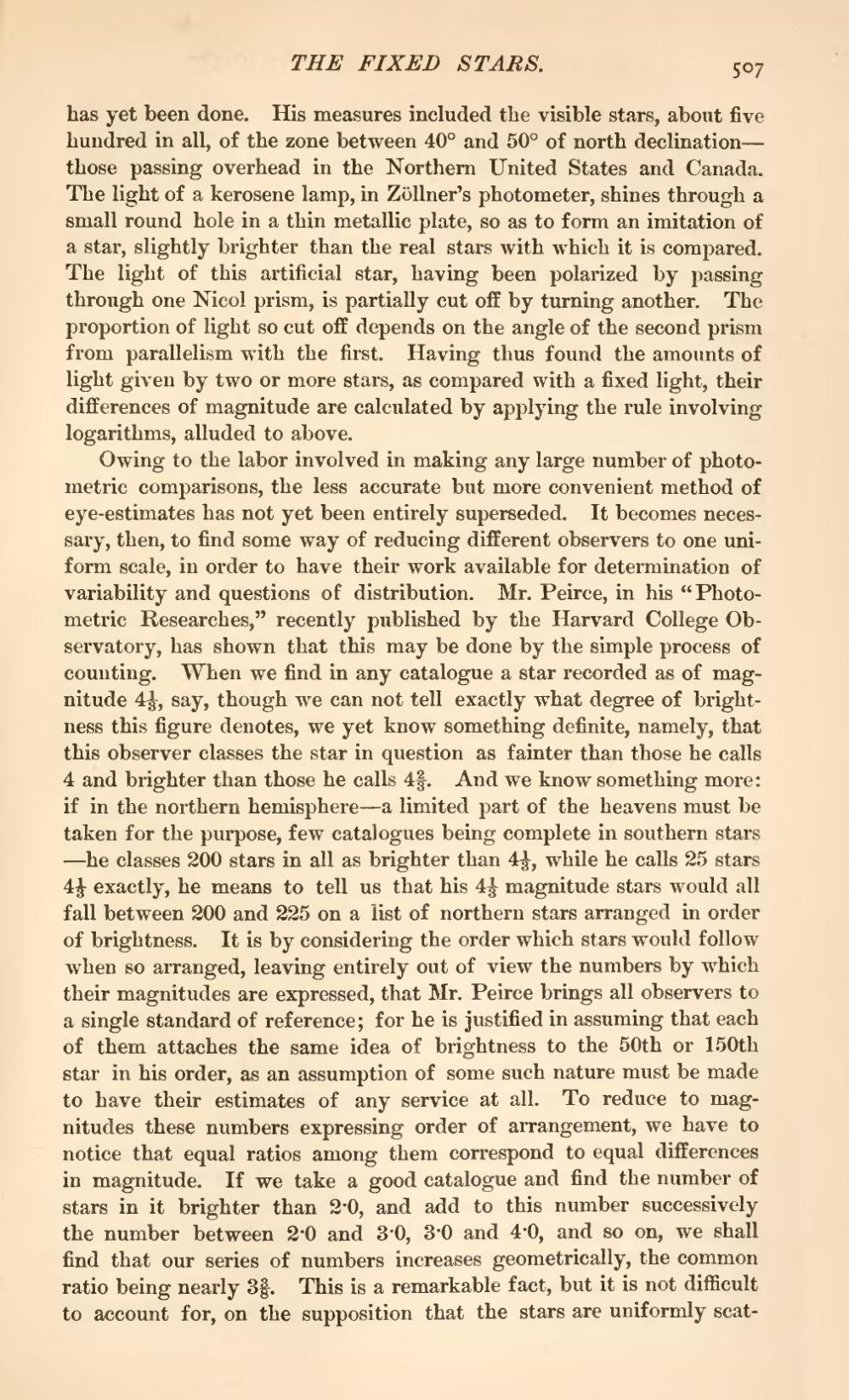has yet been done. His measures included the visible stars, about five hundred in all, of the zone between 40° and 50° of north declination—those passing overhead in the Northern United States and Canada. The light of a kerosene lamp, in Zöllner's photometer, shines through a small round hole in a thin metallic plate, so as to form an imitation of a star, slightly brighter than the real stars with which it is compared. The light of this artificial star, having been polarized by passing through one Nicol prism, is partially cut off by turning another. The proportion of light so cut off depends on the angle of the second prism from parallelism with the first. Having thus found the amounts of light given by two or more stars, as compared with a fixed light, their differences of magnitude are calculated by applying the rule involving logarithms, alluded to above.
Owing to the labor involved in making any large number of photometric comparisons, the less accurate but more convenient method of eye-estimates has not yet been entirely superseded. It becomes necessary, then, to find some way of reducing different observers to one uniform scale, in order to have their work available for determination of variability and questions of distribution. Mr. Peirce, in his "Photometric Researches," recently published by the Harvard College Observatory, has shown that this may be done by the simple process of counting. When we find in any catalogue a star recorded as of magnitude 413, say, though we can not tell exactly what degree of brightness this figure denotes, we yet know something definite, namely, that this observer classes the star in question as fainter than those he calls 4 and brighter than those he calls 423. And we know something more: if in the northern hemisphere—a limited part of the heavens must be taken for the purpose, few catalogues being complete in southern stars—he classes 200 stars in all as brighter than 413, while he calls 25 stars 413 exactly, he means to tell us that his 413 magnitude stars would all fall between 200 and 225 on a list of northern stars arranged in order of brightness. It is by considering the order which stars would follow when so arranged, leaving entirely out of view the numbers by which their magnitudes are expressed, that Mr. Peirce brings all observers to a single standard of reference; for he is justified in assuming that each of them attaches the same idea of brightness to the 50th or 150th star in his order, as an assumption of some such nature must be made to have their estimates of any service at all. To reduce to magnitudes these numbers expressing order of arrangement, we have to notice that equal ratios among them correspond to equal differences in magnitude. If we take a good catalogue and find the number of stars in it brighter than 2·0, and add to this number successively the number between 2·0 and 3·0, 3·0 and 4·0, and so on, we shall find that our series of numbers increases geometrically, the common ratio being nearly 338. This is a remarkable fact, but it is not difficult to account for, on the supposition that the stars are uniformly scat-
